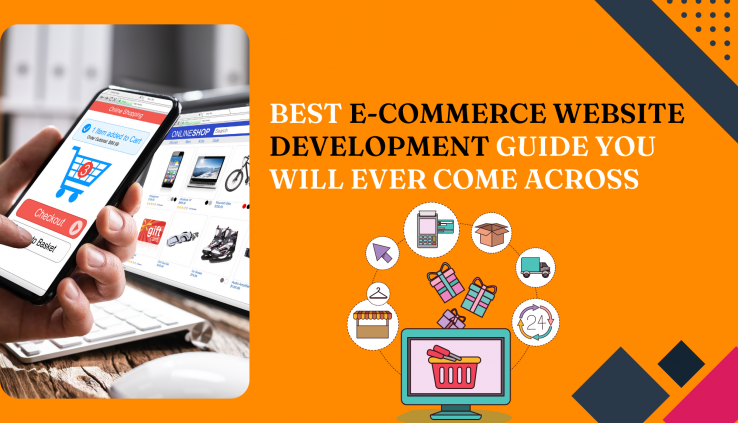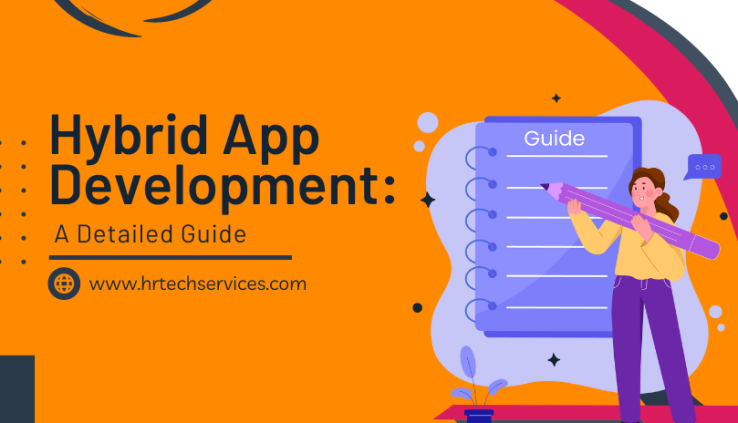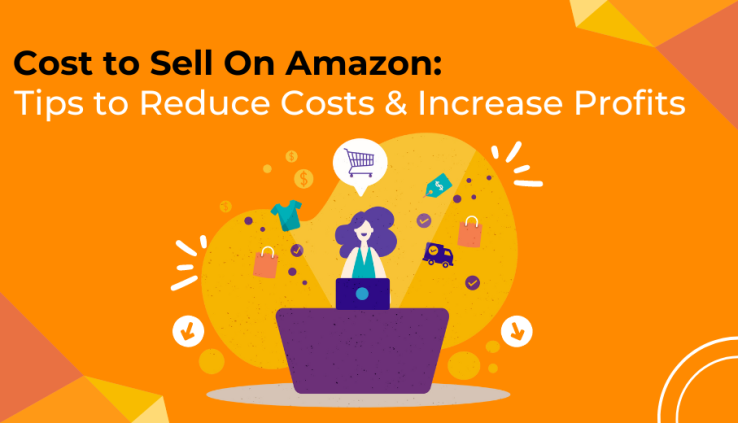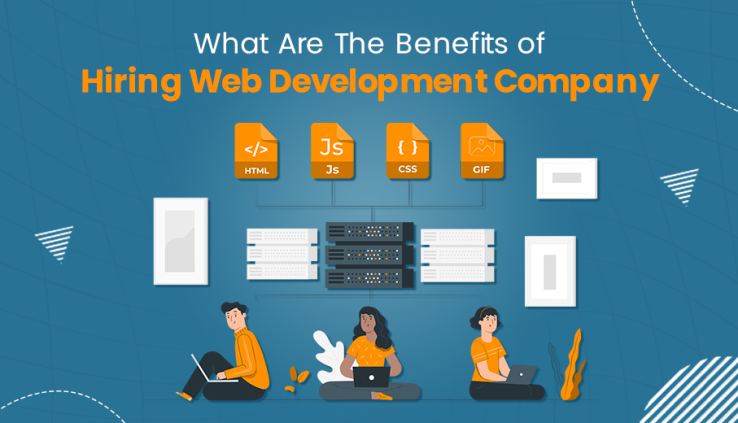E-Commerce Website Development: Step-by-Step Guide to Building a Robust Website
The importance of e-commerce website development is indisputable in today’s business world. Customer expectations are increasing rapidly. Top-notch e-commerce website development is the solution to give users the desired experience. But what is e-commerce website development?
E-commerce website development is creating an e-commerce website where users can navigate pages, find products, and make purchases. These are crucial for laying the groundwork for your company’s success. You might think that developing an e-commerce website is not easy. It’s not easy, but we will explain how you can develop an e-commerce website to increase sales.
E-Commerce Website Development Process in 6 Easy Steps
Here’s your step-by-step e-commerce website development process that would drive traffic:
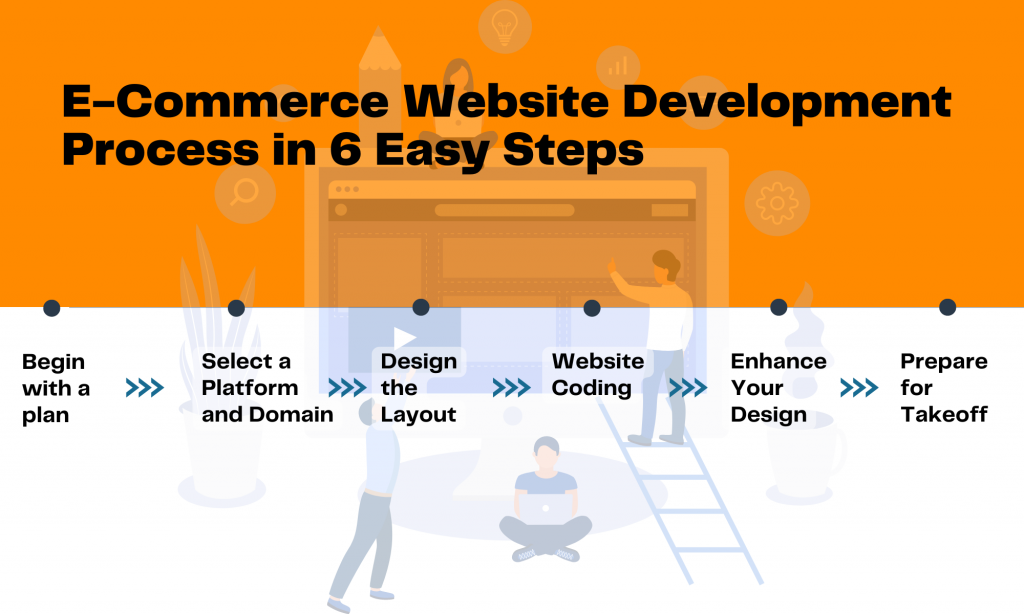
1. Begin with a plan
The first step in any development process is to frame a well-thought plan. Before designing the layout, you must have goals you would like to achieve with your website. You can start by brainstorming these points:
. Your customer service requirements
. How do you want to sell and display your products?
. The structure and layout of your site
. Your business objectives, such as increased sales and brand recognition
2. Select a Platform and Domain
Once your plan is ready, you should choose a platform and domain for your e-commerce website. Decide on the domain name or site URL. Your domain name should be short, memorable, and indicative of your brand. If you can’t think of anything else, your company’s name is the best option in almost every case.
To build and develop your website, you can also choose to use an e-commerce platform. Ecommerce platforms can assist you in building your site from scratch. You can consider e-commerce platforms like Wix, Shopify, BigCommerce etc.
3. Design the Layout
It’s time to start planning the layout of your website now that you’ve selected your domain and e-commerce platform. You can begin by putting together a sitemap or a summary of the pages on your website.
Consider what pages and content you want to include, such as:
. Product listings
. Client feedback
. Checkout procedure
. Videos
. Customer wishlists
After you’ve created your sitemap, the next two steps in the e-commerce web development process will be much easier.
4. Website Coding
Coding or back-end development is an essential component of web design and development. E-commerce web developers make sure that your website performs as intended. You can decide whether to hire e-commerce web developers or a web development company.
If you recruit a developer, have a project manager who can ensure that your app gets ready on time. Else, for developing an e-commerce website, you can hire a web development company for hassle-free web development.
5. Enhance Your Design
Once the programming is done, it’s time to focus on the design elements of your e-commerce website. Optimizing your design is a determining factor for the success of your website. Your website needs a fantastic look and layout because that is how users will interact with it.
Make an excellent first impression because that is what users notice first when browsing an e-commerce platform. Consider which functions you would use to allow users to navigate the website when developing an e-commerce website.
6. Prepare for Takeoff
Your e-commerce web development process is almost complete once you have completed the above steps. Now you are ready to launch, attract new customers and boost sales.
Before you launch your website, don’t forget to test your website in a hurry. After the launch, it’s the perfect time to apply a marketing strategy to promote your website. If everything works per the e-commerce web developers or web development company you hired, your website is ready to go.
What Makes Custom E-Commerce Website Development Beneficial?
With a customized web development process, you have more freedom and control over developing the website in your way. Apart from this, you can enjoy these benefits as well if you go for custom development:
. Increased Bounce Rate & Conversion: With a customized e-commerce website, you can please your customers better. It will lead to more conversions and a higher reputation among users.
. Creating an Attractive Layout: You can customize the look of your website as per your brand image. You can include excellent pictures, fantastic UI, and consistent checkout measures. Doing it will appeal to a lot of users.
. Timely Updates: Using e-commerce platforms to build a website will restrict you from updating your website. And utilizing old technology will bring your website down. But with a customizable website, you can switch to the latest technology and give your users better features.
Best Languages for E-Commerce Web Development
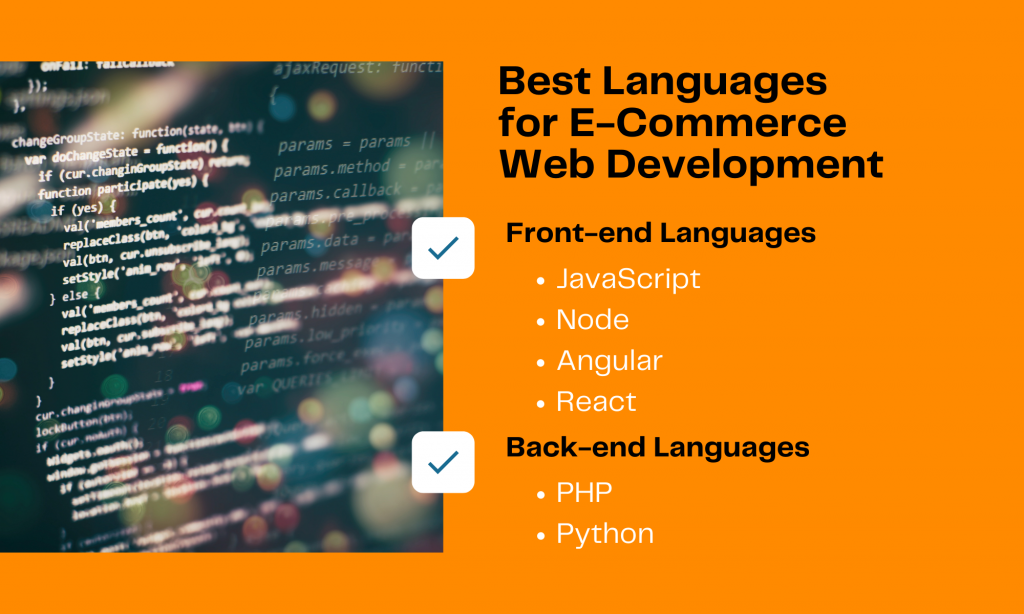
Organizations are switching to e-commerce website development due to the advancements in web development services. E-commerce web development services have also become more genuine and trustworthy than ever.
When considering web development services, you may wonder which language is best for you. Below, we have mentioned the best technologies for web design and development.
Front-end Languages
. JavaScript: JavaScript is a smart choice for businesses to upgrade websites. It allows users to interact with a web page and see changes according to their commands. Without it, a user can only scroll, click, and fill out forms.
. Node: Node is a popular choice among e-commerce web developers to construct a revolutionizing website in the E-commerce field. It works well with real-time collaboration tools and other programmes that deal with many I/O operations.
. Angular: Angular is the advanced language for building an easy-to-use e-commerce platform. It is capable of creating an interactive UI/UX design. It is also proficient in handling cart abandonment, payment processing, checkout page issues etc.
. React: React is capable of developing excellent e-commerce websites with effortless coding. It functions by developing front-end website elements responsible for UI functionality like buttons. These react elements are pieces of code applicable to various e-commerce websites or applications.
Back-end Languages
. PHP: PHP is an HTML-embedded scripting language that enhances static pages. It can generate on-demand responses, making it an excellent tool for e-commerce.
. Python: Python is a fast-developing language to speed up the entire process of E-Commerce Website Development. It has authentic security features like XSSS and uses Django for extensive scalability. For the best results, it also includes a large number of libraries and simple add-ons.
Leading Trends in the Ecommerce Website Development
Following trends is the best approach to creating robust websites. We recommend these e-commerce website development trends:
. Voice Assistant: With the introduction of voice assistants like Google Assistant, Alexa, Siri, etc., users’ lives have become easier. This feature saves the users from typing the whole thing on the search bar. There are many ways to incorporate voice features into e-commerce websites, which is also helpful for SEO.
. Chatbots: Chatbots are currently the best trend in e-commerce development as they are instrumental in solving the queries of customers. You can hire a reliable e-commerce website developer to create an advanced chatbot.
. Payment Gateways: Online payments are convenient for making payments for online shopping. You can use different platforms to include a safe and favourable payment gateway.
. AI Personalization: Artificial intelligence has become a well-known technology for e-commerce websites and a top trend in custom e-commerce development. AI and machine learning can enhance customer service and personalization.
What kind of design works well for e-commerce website development?
Using the appropriate colours, fonts, images, words, and graphics to offer a great user experience to users is the framework of good e-commerce web design.
What is the next evolution in e-commerce website development?
Future consumers’ online shopping will be centered on social e-commerce trends, with brands investing in video and live shopping.
Conclusion
Creating and running an e-commerce website is becoming more challenging. Even if you have a great product, you must develop a well-functioning app to pave your path to success. We hope you are well prepared for your journey of E-Commerce web development.
If you still need help creating an e-commerce website, HR Tech has a robust e-commerce website development team ready to deliver the best e-commerce web development services.

